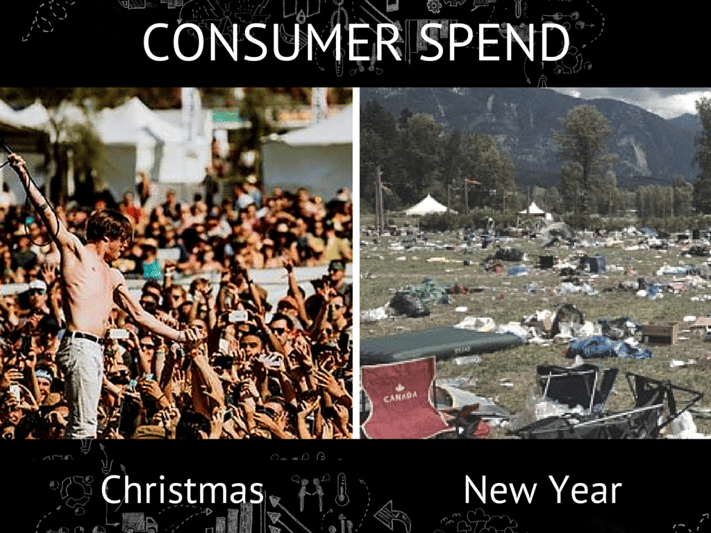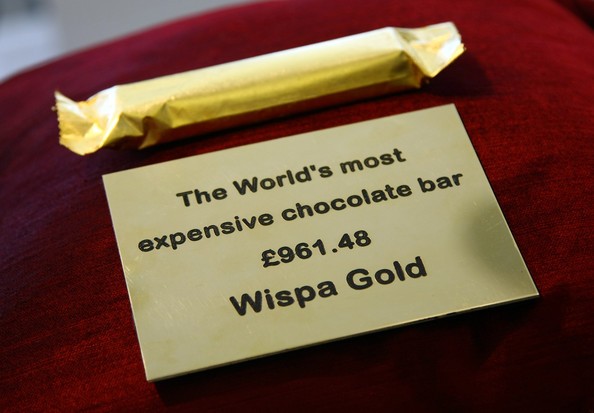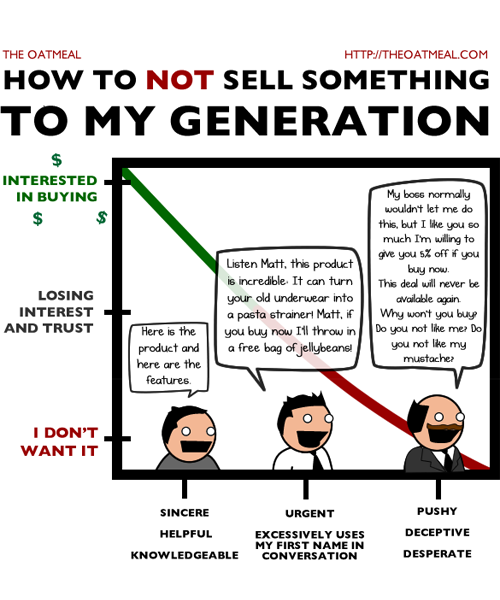 Last Christmas, consumers gave you their hearts. And money. The very next day, you gave them away. You know the rest. This year, instead of turning this holiday into a Wham! hit, try to use your marketing powers to be that 'someone special' for your customers.
Last Christmas, consumers gave you their hearts. And money. The very next day, you gave them away. You know the rest. This year, instead of turning this holiday into a Wham! hit, try to use your marketing powers to be that 'someone special' for your customers.
What makes this holiday so different?
The economics of a disappointing holiday
We know that the economy has been rough on most of South Africa’s spenders. We also know that they’ll be braving the holiday season with family, instead of going on their dream holiday.
They’re trading in their tans and cocktails for dry chicken and wet kisses at Aunt Edna’s house.
 You have to be brave to keep your bank balance in the black. Why don't you, as a marketer, put yourself in your consumers’ shoes, and match the festive heroism?
You have to be brave to keep your bank balance in the black. Why don't you, as a marketer, put yourself in your consumers’ shoes, and match the festive heroism?
How you can help the family-focused consumer
We all do things a little differently when it comes to the crunch, so that we can save, rationalise and plan for the tough times that may lie ahead. This need tends to subdue the festive spirit ever so slightly (or a lot, depending on who you are and how many talcum-powdered relatives you have).
Here are some bold moves we think may help you to delight consumers, and keep them loyal after the holiday rush:
1. Help them to save
We’re not talking about promotions and bulk deals here, although they are a great start.
We’re talking about actively involving yourself in their quest to avoid getting into gift-wrapped debt for Christmas. Budgeting over the holidays is a nightmare, and trying to keep your bank account in order while unexpected costs pile up can give you the urge to put coal in stockings left, right and centre.
Can you do what Woolworths has done, and build affordable models and budget-friendly guides to help your customers save their money?
Try these:
- Affordable festive menus for the table of 12
- Holiday trip planners for the cash-strapped traveller
- Cost-comparison sites for gift searches. Be the ‘Holiday Hippo’
2. Turn your loyalty program on its head
As marketers, we know that loyalty programs reward the behaviour we want our consumers to exhibit toward our product or service. We train this behaviour into them, and give them the equivalent reward each time they satisfy our requirements.
But are we satisfying any of their requirements?
We ask for data, spend, and behaviour that benefits us, and customers give us what we ask for in return for rewards. This Pavlovian response has become so ingrained in the consumer mindset that consumers are now being trained by everyone (and their dog). Brands benefit immensely, analytics abound, and consumers get… a whole lot of plastic in their wallets.
What if you reversed it, and trained your brand to engage and delight the consumer with no strings attached? Would you see a change in brand-sentiment, or an upswing in consumer loyalty?
Chipotle ran a loyalty program that didn't reward consumers for eating; it rewarded them for learning. The campaign won two Grand Prix at Cannes in 2012, and was focused on educating consumers on the sustainable farming practices that Chipotle uses, in comparison to their competitors who are still using unethical farming methods.
Along with the brand sentiment improving, they also had the pleasure of inspiring other fast-food retailers to follow suit.
It’s time to think about what you can do to change the status quo, whichever industry you are in, and make your brand deliver on consumer expectations by actually delivering - not setting up deliverables for consumers to adhere to.
3. Break the festive supply/demand cycle
Tying into the loyalty bid is the idea that you can, in fact, manage your prices over the festive season so that your customers know they can rely on you to help them during the tough economic times.
We all know that prices soar over holidays – Christmas is no exception.
Why? Because brands and retailers know that they are in demand - but what happens on every other day of the year? You either win, or you fail dismally at holding the attention of the people who had no choice but to buy your product, over-priced or not.

So how do you win? A great example of using your business plan as a way to delight customers is UK flower-shop Arena Flowers.
You can read the full article here, but the essential reasoning is this:
- You know that a business cannot survive on the single or few holidays that generate massive income per year.
- You know that your customers will not show you loyalty post-rush.
- You also know that prices soar over these holidays for retailers, consumers, and brands alike, and it creates debt for consumers that reduces their spending power later.
Because of the over-stocking that all retailers tend to do before the holidays, the end of the rush can result in the sale of leftover stock at a loss.
Arena Flowers realised this: They now buy well in advance, negotiate their prices, and accept that over-stocking to make more money usually results in less profit.
How can you follow this example to maintain a steady stream of business, year round?
- Plan ahead
At Christmas, it’s fine to eat leftovers for three days after your family lunch.
It’s not so great to be selling them.
Ensure you can accommodate demand, without over-shooting the mark and ending up unable to shift your stock.
Trying to sell unwilling consumers your unsold units in January can cause your sales people to end up on the wrong end of the Oatmeal’s scale, which is a pretty embarrassing position to be in:
- Break free of the clutter
Marketing is in your face, and looks very much like this over the Christmas period:

Now imagine how noticeable another chain would be in that melee. Not very? Correct.
Offering people something useful, helpful, and different is key to succeeding in both the hip-hop and marketing worlds.
Try to make your offering a little less expensive than this outfit, and keep your pricing consistent. Your customers will thank you.
- Let people know your policy
Do people know how you price your items? If you sold them for less in a well-planned bid for loyalty, would they assume they were of lower quality? Do they equate expense with worth?

They may – but your communication can change their minds.
An example of the converse of this is the clothing brand Tsonga: Their goods are expensive, and their sales rely on the fact that people know where they come from, how they’re made, and where the proceeds go. In the end, it’s worth it to purchase their shoes and bags, because consumers can give back when they buy.
Their communication strategy keeps them in business, and yours can help you to launch your consistent-pricing model.
In short, while a small group of consumers may not really care one way or the other about prices, and will spend for convenience, the majority of consumers are discerning and money-savvy.
Help them become your greatest fans by showing them that you understand their bank-statement nightmares. Your support will help them sleep better at night.
For more gutsy festive hacks to make your business stand out, subscribe to our blog:





SUBMIT YOUR COMMENT